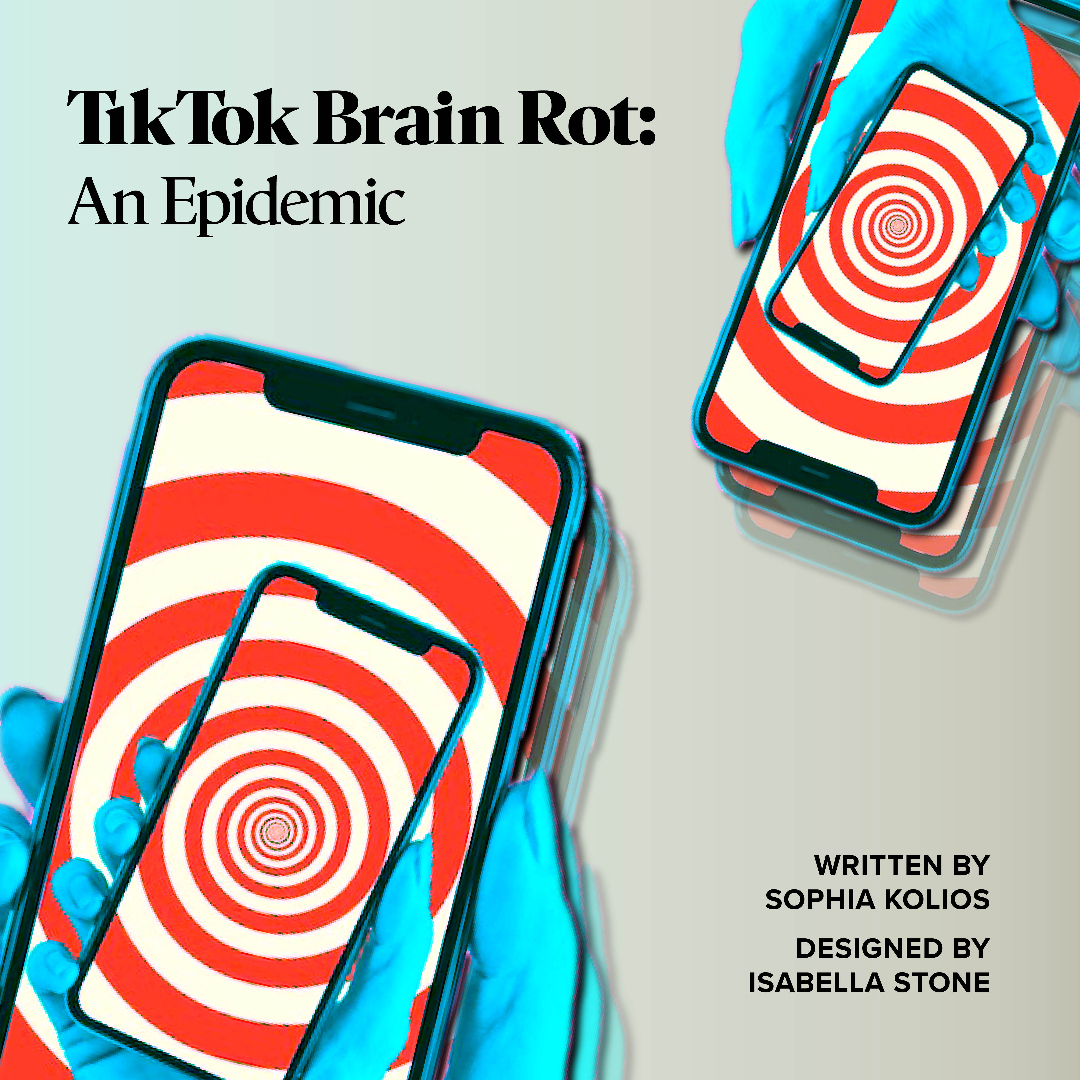
With the rise of fast-paced media such as TikTok, YouTube Shorts and Instagram Reels, content creation and media consumption has significantly changed over the past five years. It is no surprise that rates of ADHD, or attention-deficit/hyperactivity disorder, have drastically increased since the COVID-19 pandemic began in 2020. What is surprising, however, is the growth in popularity of mindless self-sabotage with the use of social media app TikTok; this concept is called brain rotting. So why are people still in favor of such content?
TikTok brain rot is essentially what the title suggests: the “rotting” of the brain due to the overconsumption of TikTok media. This term is synonymous with “doomscrolling,” or spending excessive time online scrolling. This could look like laying in bed for hours on end scrolling through the infinite content on TikTok’s For You Page, or intentionally consuming media to elicit an upset or angry reaction for the sake of entertainment and stimulus. Some may wonder what the appeal is, especially if it is contributing to a nationwide decline in the younger generations’ mental health as a whole.
What once was an eight-hour looped version of Nyan Cat is now a playlist of about 100 videos, each approximately 10-20 seconds long, revolving around an animated toilet with a man’s head popping out from the bowl — Skibidi Toilet. These viral videos took the Internet by storm in 2023 and are known as the backbone of TikTok brain rot culture. Younger generations have found great obsession with the short animated clips of a man’s head in a toilet overtaking humanity. The videos themselves are silly machinimas, but the target demographic loves them for how random and thoughtless the visual stimulus proves to be.
The creator of Skibidi Toilet has gained over 44 million subscribers on YouTube under the alias, DaFuq!?Boom!, since the popularization of their series. The fast-paced content that grew in popularity over TikTok has significantly contributed to the shortening of attention spans amongst the younger generations, as well as altering daily slang. For many Gen Z-ers, it is nearly impossible to finish a sentence without using the terms rizz, sigma or ratio as these words have become so deeply ingrained in day-to-day communication. To most folk, this new trend is sparking questions about the addictive nature of such content on TikTok; however, its same consumers defend and rely on it as a thoughtless outlet after a long day.
This phenomena could be credited to the addictive nature of any quick-dopamine stimulus, such as drugs like nicotine, for example. Regardless of how scientifically harmful certain behaviors like doomscrolling are, it does not take away from the fact that the brain craves dopamine rushes, entertainment and consistent stimulus. The younger generations’ relationship with social media is not a new concept; however, it has been rapidly evolving in unpredictable ways for years. For starters, individuals self-comparing to those they see in popular media has become synonymous with brain rot addiction as people cannot stop doing it regardless of the self-awareness of toxicity. Individuals observably seem to virtually need others to make decisions for them such as what shoes to wear, what words to throw into conversation and even what type of diet to follow for two weeks. Individualism is at an all-time high yet the TikTok brain rot epidemic is pushing people to be more alike — through the addiction of comparison — as well as the popularization of groupthink.
Overall, TikTok is a great platform with countless positives such as the freedom of self-expression, the sharing of recent news, the hospitality of new ideas and simply stress relief. It is important to recognize both the good and bad in any major concept that takes up time in the day, but understanding the deeper levels of why and how certain declines in mental health are happening is just as significant.